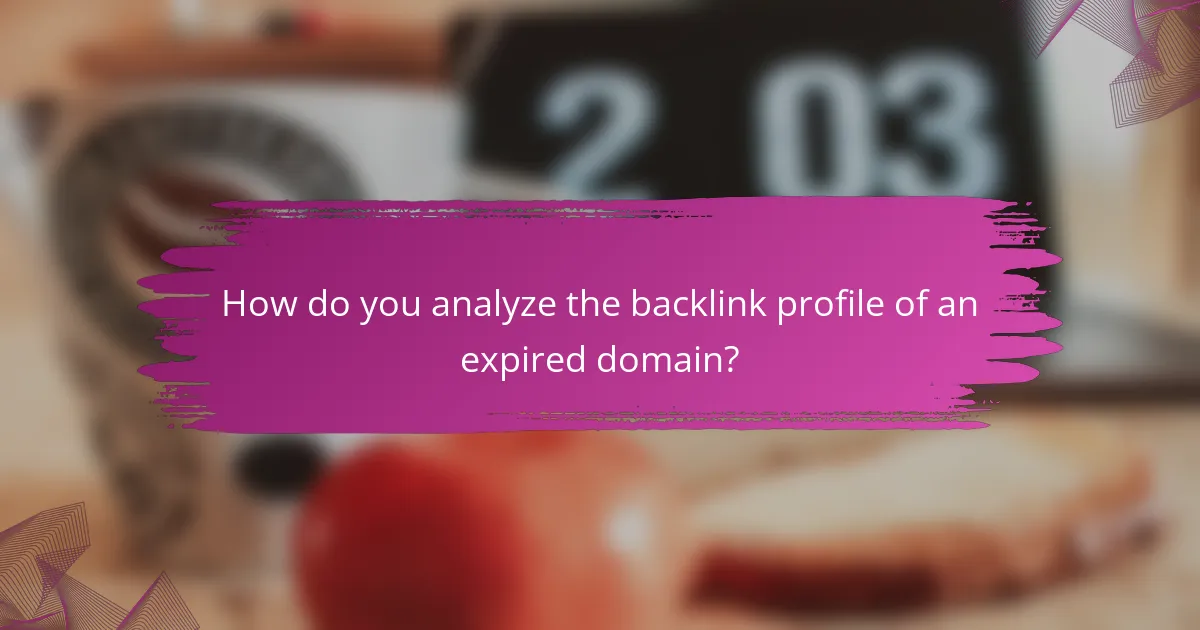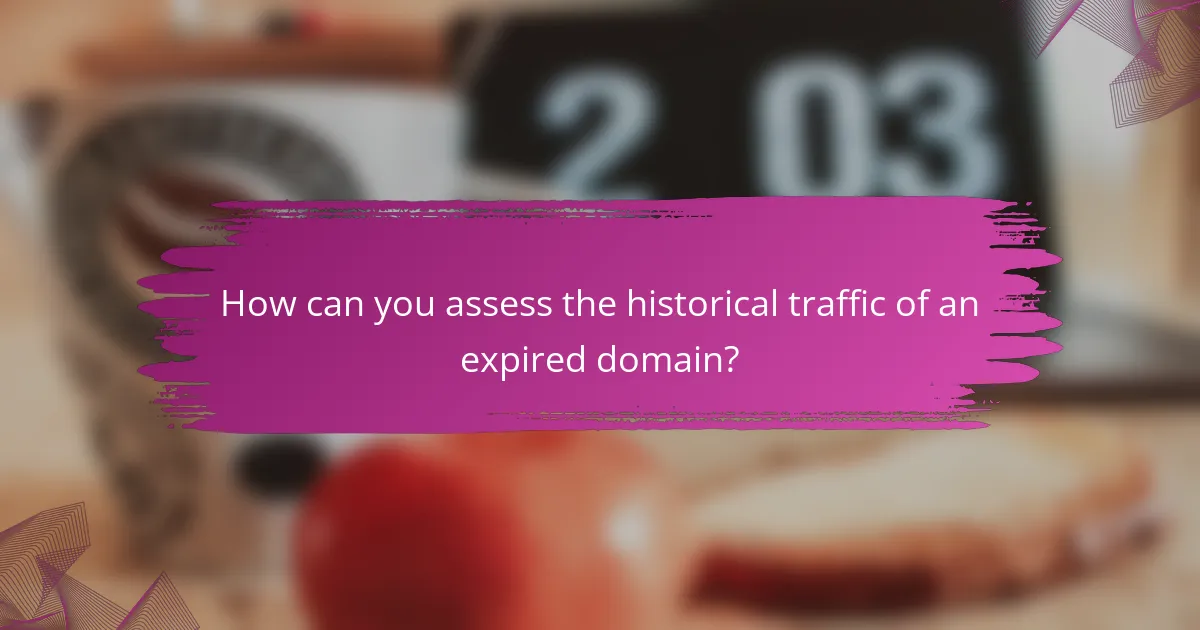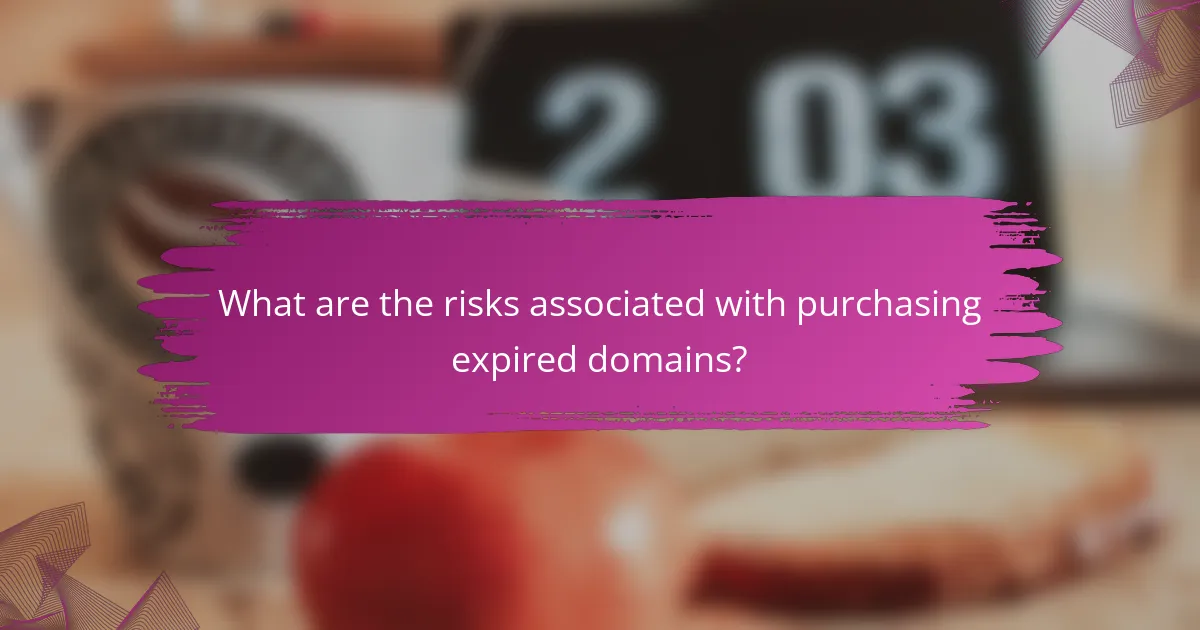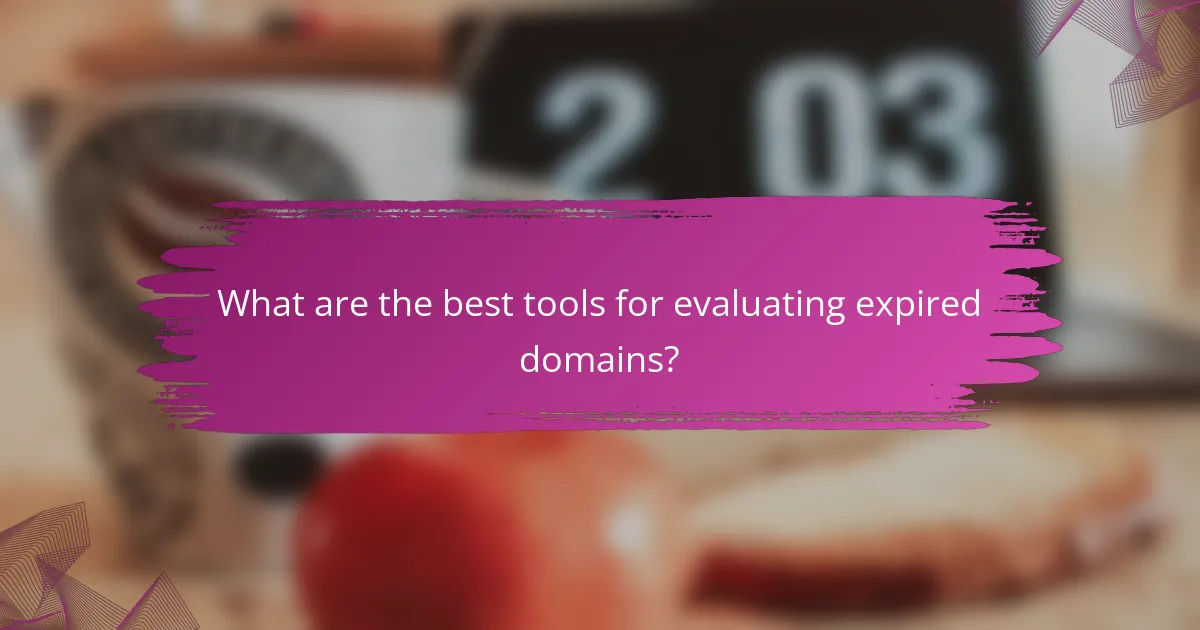Evaluating expired domain names in the USA requires a strategic approach that considers various factors such as domain authority, backlink profiles, and keyword relevance. By analyzing these elements, you can gauge the potential value and usability of a domain for your online presence. Understanding metrics like trust flow and citation flow further enhances your ability to identify valuable domains that can boost your SEO and traffic generation efforts.

What strategies can you use to evaluate expired domain names in the USA?
To effectively evaluate expired domain names in the USA, consider factors such as domain authority, backlink profiles, keyword relevance, historical traffic, and brandability. These strategies will help you determine the potential value and usability of a domain for your online presence.
Domain authority assessment
Domain authority (DA) is a metric that predicts how well a domain will rank on search engines. Tools like Moz or Ahrefs can provide DA scores, typically ranging from 1 to 100, with higher scores indicating greater potential for ranking. Aim for domains with a DA above 30 for better chances of visibility.
When assessing DA, consider the competition in your niche. A domain with a high DA in a competitive market may still struggle to rank, while a lower DA in a less competitive area could perform well. Always compare the DA of the expired domain with that of competitors.
Backlink profile analysis
A strong backlink profile is crucial for the SEO value of an expired domain. Analyze the quality and quantity of backlinks using tools like SEMrush or Majestic. Look for backlinks from reputable sites, as these contribute more positively to the domain’s authority.
Be cautious of spammy backlinks, as they can harm your future SEO efforts. Aim for a diverse backlink profile with links from various domains and avoid domains with a high percentage of low-quality backlinks.
Keyword relevance check
Evaluating the keyword relevance of an expired domain involves checking if the domain name contains keywords that are relevant to your target audience. Use keyword research tools to identify the search volume and competition for these keywords.
A domain that includes high-volume keywords can provide an advantage in search rankings. However, ensure that the keywords align with your brand and content strategy to maintain coherence and relevance.
Historical traffic evaluation
Understanding the historical traffic of an expired domain can provide insights into its past performance. Tools like Wayback Machine can help you view previous versions of the site and assess its traffic trends over time.
Look for domains that had consistent traffic before expiration, as this indicates a potentially engaged audience. Avoid domains with a sharp decline in traffic, as this may suggest issues that could affect future performance.
Brandability and memorability
Brandability refers to how well a domain can represent a brand and be remembered by users. A good domain should be short, easy to spell, and relevant to your business. Test the domain name with potential users to gauge its memorability.
Consider the potential for creating a unique brand identity. Domains that are catchy or evoke positive associations can enhance marketing efforts. Avoid complex or overly long domain names that may confuse users or be easily forgotten.

How do you analyze the backlink profile of an expired domain?
Analyzing the backlink profile of an expired domain is crucial for assessing its potential value and risks. This process involves examining the quality and quantity of links pointing to the domain, which can significantly impact its future performance in search engines.
Use tools like Ahrefs
Ahrefs is a powerful tool that provides comprehensive data on backlinks. By entering the expired domain into Ahrefs, you can access metrics such as the total number of backlinks, referring domains, and the domain’s authority score. These insights help you gauge the overall strength of the domain’s backlink profile.
Other tools like SEMrush and Moz can also be beneficial. They offer similar features, allowing you to compare data and ensure a thorough analysis.
Identify toxic backlinks
Toxic backlinks can harm your SEO efforts and lead to penalties from search engines. Look for links from low-quality sites, spammy domains, or those with a history of malicious activity. Tools like Ahrefs and SEMrush can help identify these harmful links.
A good practice is to create a list of toxic domains and consider disavowing them if you acquire the expired domain. This step can help protect your new site’s reputation and ranking potential.
Evaluate referring domains
Assessing the referring domains is essential for understanding the quality of the backlinks. Focus on the authority and relevance of these domains. A few high-authority referring domains can be more valuable than numerous low-quality ones.
Check the diversity of referring domains as well. A healthy backlink profile typically includes a mix of different sources, which can enhance the domain’s credibility and reduce the risk of penalties.

What metrics indicate a valuable expired domain?
Valuable expired domains can be assessed using several key metrics that reflect their potential for SEO and traffic generation. The most important indicators include domain authority score, trust flow and citation flow, and the age of the domain.
Domain authority score
The domain authority score, developed by Moz, ranges from 1 to 100 and predicts how well a domain will rank on search engines. A higher score indicates a stronger likelihood of ranking well, making it a crucial metric when evaluating expired domains.
When assessing a domain authority score, aim for domains with a score in the mid to high 20s or above for better chances of SEO success. Tools like Moz’s Link Explorer can help you easily check this score.
Trust flow and citation flow
Trust flow and citation flow are metrics provided by Majestic that measure the quality and quantity of backlinks to a domain. Trust flow indicates the quality of links, while citation flow reflects the quantity.
For a valuable expired domain, look for a trust flow score that is at least half of the citation flow score. This balance suggests that the domain has a healthy backlink profile, which is essential for maintaining credibility and search engine rankings.
Age of the domain
The age of a domain can significantly influence its value, as older domains often have established authority and trust with search engines. Generally, domains that are several years old are preferred, as they are less likely to be associated with spam or penalties.
When evaluating the age of a domain, consider using tools like WHOIS to check the registration date. An older domain, especially one that has been continuously registered, can provide a competitive advantage in SEO efforts.

How can you assess the historical traffic of an expired domain?
To assess the historical traffic of an expired domain, you can utilize various tools and methods that provide insights into past visitor numbers and engagement levels. Understanding this traffic can help determine the domain’s potential value and relevance for your purposes.
Utilize SEMrush traffic analytics
SEMrush offers a comprehensive traffic analytics tool that allows you to view estimated traffic data for expired domains. You can analyze metrics such as organic search traffic, paid traffic, and referral traffic over time, giving you a clear picture of the domain’s performance.
When using SEMrush, focus on trends rather than exact numbers. Look for consistent traffic patterns or spikes that may indicate successful marketing campaigns or seasonal interest. This can help you gauge the domain’s potential for future use.
Check for historical rankings
Examining historical rankings is crucial for understanding an expired domain’s visibility in search engines. Tools like Ahrefs or Moz can provide insights into the domain’s past keyword rankings and how they have changed over time.
Pay attention to the keywords that the domain ranked for and their search volumes. A domain that previously ranked for high-traffic keywords may still have value, even if it has since expired. Consider the relevance of these keywords to your intended use to make an informed decision.

What are the risks associated with purchasing expired domains?
Purchasing expired domains carries several risks that can impact your online presence and business reputation. Key concerns include potential penalties from search engines and the risk of inheriting a tarnished brand image.
Potential penalties from Google
Expired domains may have a history of penalties from Google, which can severely affect your website’s visibility. If the previous owner engaged in black-hat SEO practices, the domain could be flagged, leading to lower rankings or even removal from search results.
To mitigate this risk, conduct thorough due diligence by checking the domain’s backlink profile and history using tools like Google Search Console or third-party services. Look for any red flags, such as unnatural link patterns or a history of spammy content.
Loss of brand reputation
Acquiring an expired domain can lead to a loss of brand reputation if the previous owner had a negative image or was involved in controversial activities. This can result in customer distrust and a decline in traffic.
Before purchasing, research the domain’s history using tools like the Wayback Machine to view past content and assess its reputation. Additionally, consider the domain’s previous branding and how it aligns with your current business values and goals to avoid potential conflicts.

What are the best tools for evaluating expired domains?
Several tools are essential for evaluating expired domain names, particularly in the USA. Key options include SEMrush for traffic insights and Majestic for backlink analysis, both of which provide valuable data to help assess a domain’s potential value.
SEMrush for traffic data
SEMrush is a powerful tool that offers comprehensive traffic data for expired domains. It allows users to analyze organic search traffic, keyword rankings, and overall visibility in search engines. This information is crucial for determining the domain’s past performance and its potential for future success.
When using SEMrush, focus on metrics such as estimated monthly traffic and the number of keywords the domain ranks for. A domain with consistent traffic and a diverse keyword portfolio is often more valuable. Avoid domains with sudden spikes or drops in traffic, as these may indicate issues.
Majestic for backlink analysis
Majestic specializes in backlink analysis, providing insights into the quality and quantity of links pointing to an expired domain. A strong backlink profile is a key indicator of a domain’s authority and can significantly influence its SEO potential. Majestic’s metrics, such as Trust Flow and Citation Flow, help assess the strength of these links.
When evaluating a domain with Majestic, look for a high Trust Flow score relative to Citation Flow. This balance suggests that the domain has quality backlinks from reputable sources. Be cautious of domains with many low-quality links, as they can harm your SEO efforts.
